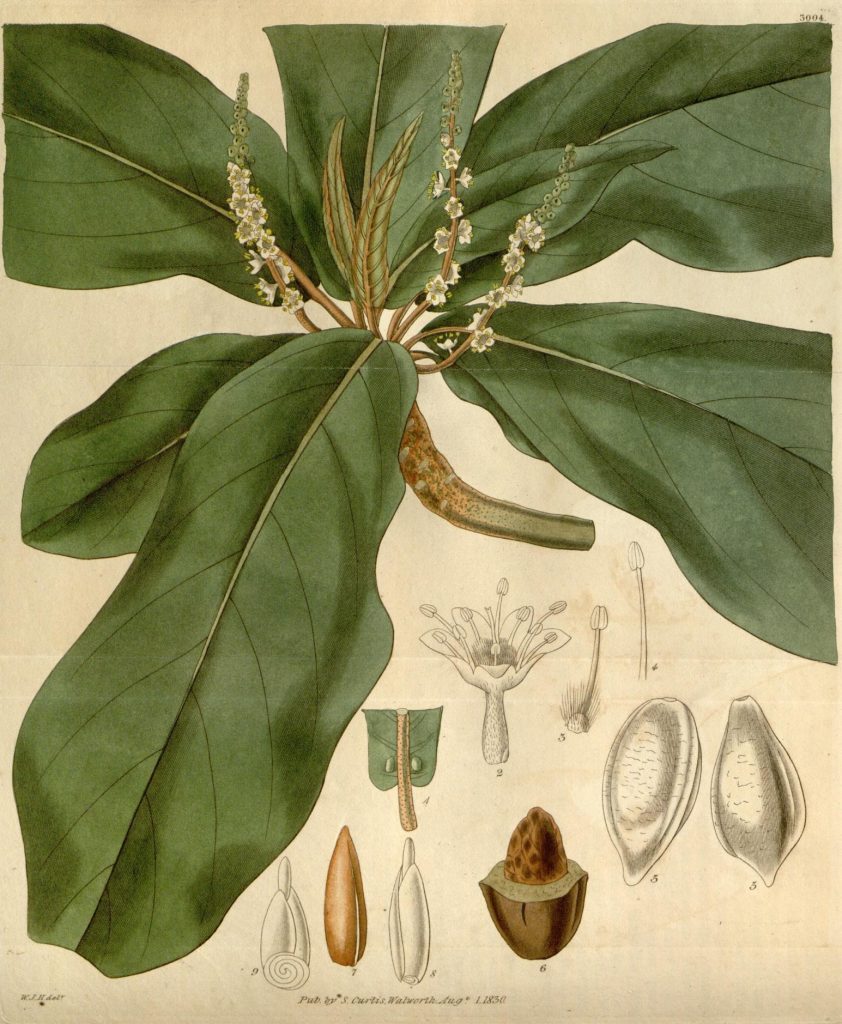Our Swamp-loving Trees

Zazamalala is a dry deciduous forest, but due to the presence of a few natural ponds, there is quite some variation in biodiversity. In fact, there are a few swampy areas which can be inundated during and shortly after the rainy season. With our experiences from some trial and error, we have planted the following trees in these areas.
Terminalia catappa. This is the Fresh-water almond or atafana, an indigenous tree with large fleshy leaves and edible (when roasted) almonds. When the leaves fall into a pool, it stimulates the fish toward reproduction. The leaves are also a favourite food of the Madagascar Big-headed turtles.
Raphia farinifera. The famous Raffia palm is probably introduced from Africa. This palm has the longest leaves of all plants and these were formerly used to make cloth. Nowadays they are merely used for artisan craftwork like baskets and hats. We like these palms because of their impressive size and the trunks clotted in masses of old stalks and leaves. A Raffia palm may already fruit after 20 years and thereafter dies.
Ravenea rivularis. The riverside Majestic palm was believed to occur in the south-west of Madagascar, but we discovered a natural population in a nearby former forest at Manamby. These palms may develop a 50 cm thick trunk and their favourite place is a pool of muddy water. The IUCN status is endangered, but at Zazamalala we aim to plant at least a thousand palms this year and this may end the endangered status of this beautiful but slowly growing palm.
Securinega perrieri. The Perrier pond tree is a small tree with beautiful red timber. As the Malagasy name Hazomenaranovory indicates, it prefers a humid place and loves small ponds.